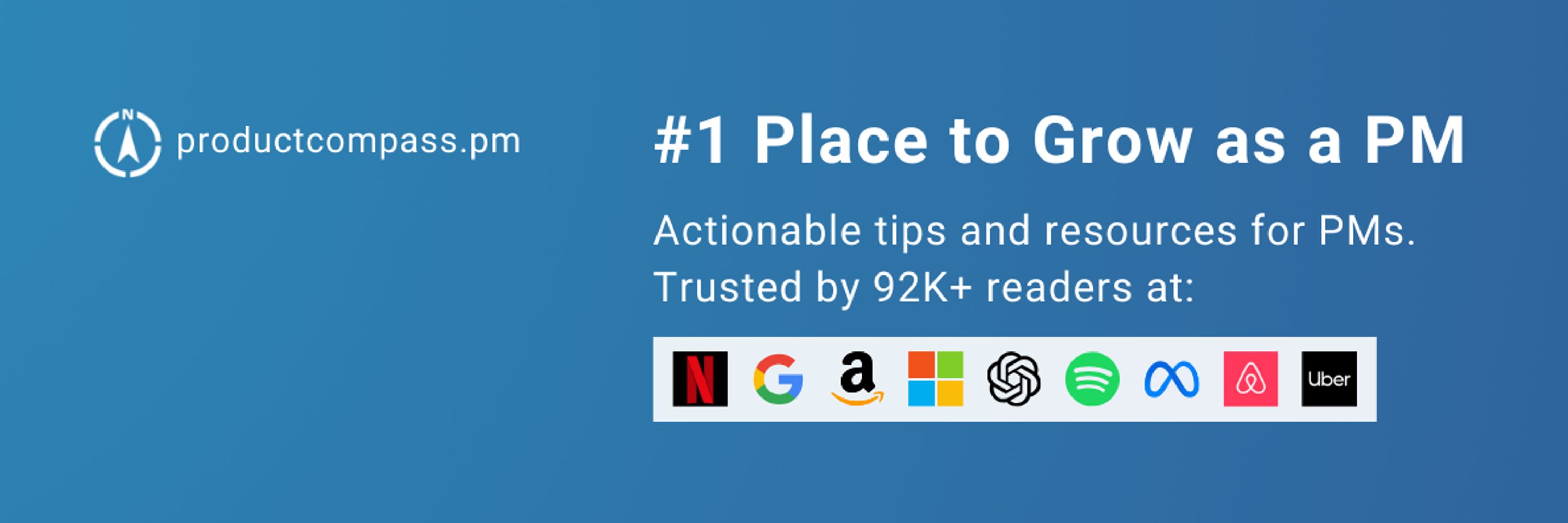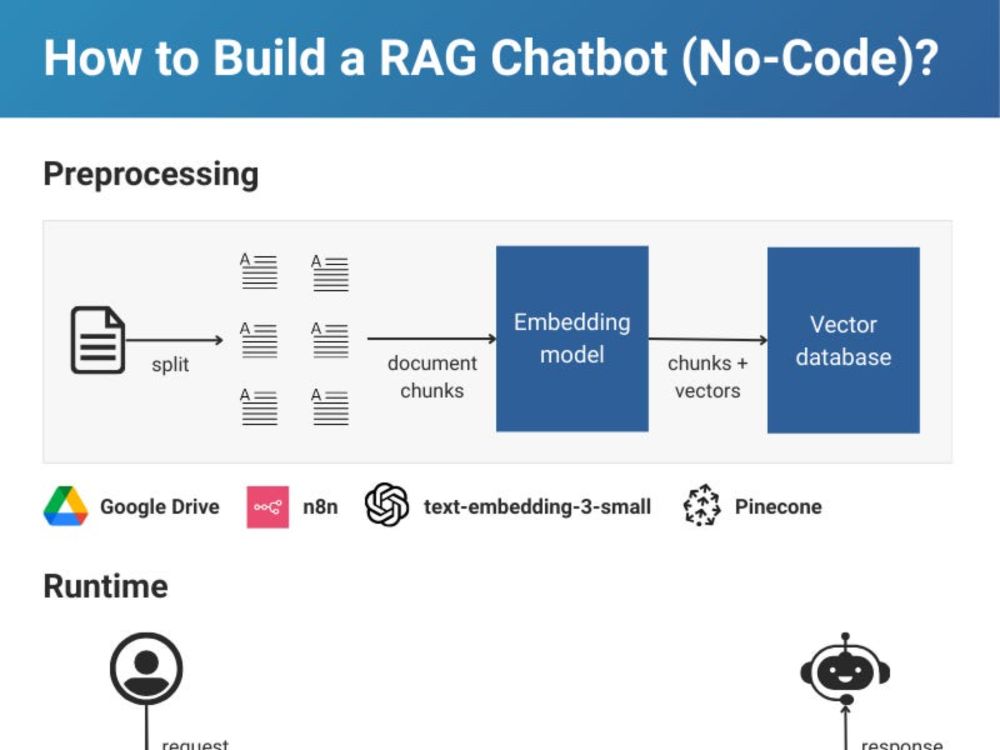
You can explore MCP yourself. It's not hard.
Or get ready-to-use configuration to copy from my new post: www.productcompass.pm/p/mcp-case-s...
Plus, my support on Slack anytime.
(7/7)

You can explore MCP yourself. It's not hard.
Or get ready-to-use configuration to copy from my new post: www.productcompass.pm/p/mcp-case-s...
Plus, my support on Slack anytime.
(7/7)
(6/7)

(6/7)
It's banal to use, with 300+ supported systems:
(5/7)

It's banal to use, with 300+ supported systems:
(5/7)
1. Spending too much time working with the backlog?
- You might easily save 10+ hours/week.
2. Is your job about creating User Stories, rather than discovery?
- Bad news. AI can do that for you. Learn fast.
(4/7)
1. Spending too much time working with the backlog?
- You might easily save 10+ hours/week.
2. Is your job about creating User Stories, rather than discovery?
- Bad news. AI can do that for you. Learn fast.
(4/7)
1. Download Claude Desktop
2. Get Figma access token
3. Get Atlassian API token
4. Configure MCP servers for Figma and Jira
5. Ask AI to create epics and stories based on Figma
6. Wait 10 minutes. Done.
(3/7)
1. Download Claude Desktop
2. Get Figma access token
3. Get Atlassian API token
4. Configure MCP servers for Figma and Jira
5. Ask AI to create epics and stories based on Figma
6. Wait 10 minutes. Done.
(3/7)
Kind of boring.
AI creates 6 epics and 30 user stories.
I'm watching: youtu.be/-J1T4dF8zqo
(2/7)

Kind of boring.
AI creates 6 epics and 30 user stories.
I'm watching: youtu.be/-J1T4dF8zqo
(2/7)
- Follow me @pawelhuryn.bsky.social to master AI PM together
- Share this thread with others: bsky.app/profile/pawe...
I appreciate it!
A great way to learn, automate your work, or create a solution for a PM portfolio.
(That's probably the only tutorial to do it end-to-end without installing anything locally)
(1/8) 🧵
- Follow me @pawelhuryn.bsky.social to master AI PM together
- Share this thread with others: bsky.app/profile/pawe...
I appreciate it!
- Learn about RAG
- Develop a better intuition for managing AI products
- Build an AI-powered RAG chatbot for your portfolio
- Automate your work
Probably the only no-code, no-install tutorial.
How-to and templates: www.productcompass.pm/p/how-to-bui...

- Learn about RAG
- Develop a better intuition for managing AI products
- Build an AI-powered RAG chatbot for your portfolio
- Automate your work
Probably the only no-code, no-install tutorial.
How-to and templates: www.productcompass.pm/p/how-to-bui...
The process takes 15-45 minutes and doesn’t require coding or installing anything locally.

The process takes 15-45 minutes and doesn’t require coding or installing anything locally.
You can build it virtually for free:
- UI: Lovable(free version)
- Orchestration: n8n (free trial)
- LLM: GPT-4o-mini by OpenAI (less than $2)
- Embedding model: text-embedding-3-small
- Vector database: Pinecone (free tier)
- Documents: Google Drive

You can build it virtually for free:
- UI: Lovable(free version)
- Orchestration: n8n (free trial)
- LLM: GPT-4o-mini by OpenAI (less than $2)
- Embedding model: text-embedding-3-small
- Vector database: Pinecone (free tier)
- Documents: Google Drive
When the user asks a question, the question is also converted into a vector and used to retrieve the most similar document chunks.
Finally, an LLM uses retrieved chunks and the original request to generate an answer.

When the user asks a question, the question is also converted into a vector and used to retrieve the most similar document chunks.
Finally, an LLM uses retrieved chunks and the original request to generate an answer.
When you use RAG, your data (e.g., documents) is not stored in the original format.
Instead, it's split into chunks (e.g., 500-1000 characters each), which are then converted into multi-dimensional vectors and stored in a vector database.

When you use RAG, your data (e.g., documents) is not stored in the original format.
Instead, it's split into chunks (e.g., 500-1000 characters each), which are then converted into multi-dimensional vectors and stored in a vector database.
But how does it work?


But how does it work?
IQ is what IQ tests measure. Many use this circular definition on purpose as IQ doesn't account for all intelligence aspects.
I mean, you're publicly claiming to have an IQ higher than Einstein's (160).
IQ is what IQ tests measure. Many use this circular definition on purpose as IQ doesn't account for all intelligence aspects.
I mean, you're publicly claiming to have an IQ higher than Einstein's (160).
Enjoy this?
Follow me @pawelhuryn.bsky.social and repost this to help your friends: bsky.app/profile/pawe...
I appreciate it.
--
P.S. You can download my infographic (PDF) and 30+ others for free by subscribing to my newsletter: www.theproductcompass.tech/download-pm-...
Product teams usually focus on Value, Usability, Viability, and Feasibility.
But I’ve seen products and initiatives fail for reasons that didn't easily match those categories.
🧵

Enjoy this?
Follow me @pawelhuryn.bsky.social and repost this to help your friends: bsky.app/profile/pawe...
I appreciate it.
--
P.S. You can download my infographic (PDF) and 30+ others for free by subscribing to my newsletter: www.theproductcompass.tech/download-pm-...
“A good failure is when the value of the lesson is greater than the cost of the lesson. A bad failure is when the value of the lesson is much less than the cost of the lesson.” - Alberto Savoia, author of The Right It
“A good failure is when the value of the lesson is greater than the cost of the lesson. A bad failure is when the value of the lesson is much less than the cost of the lesson.” - Alberto Savoia, author of The Right It
The key to making decisions is taking calculated risks informed by data, qualitative insights, and intuition.
The ultimate test is users interacting with your product in the real world, using their own data.
The key to making decisions is taking calculated risks informed by data, qualitative insights, and intuition.
The ultimate test is users interacting with your product in the real world, using their own data.
Depending on the context, three other risk areas to consider:
- Go-to-market (I recommend separating it from viability for new products)
- Strategy and objectives
- Teams
Depending on the context, three other risk areas to consider:
- Go-to-market (I recommend separating it from viability for new products)
- Strategy and objectives
- Teams
Examples, best practices, and free access: www.productcompass.pm/p/deep-marke...
Hope that helps!

Examples, best practices, and free access: www.productcompass.pm/p/deep-marke...
Hope that helps!

